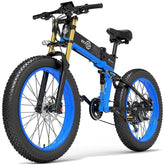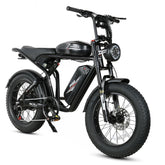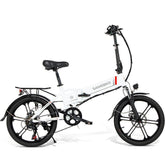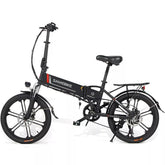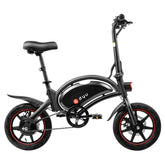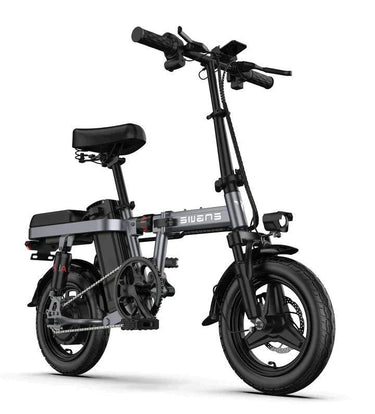Important Elements Of An Electric Bike
Bicycles have long been a preferred mode of transportation due to their affordability, convenience, and practicality. However, they may not be suitable for everyone, especially elderly individuals or those with mobility issues. Climbing hills or carrying heavy loads on a traditional bicycle can be physically demanding. This is where electric bikes (e-bikes) come in, revolutionizing the way we think about sustainable transport.
Modern e-bikes combine the simplicity of a traditional bicycle with the comfort and efficiency of a motorized vehicle. They offer an eco-friendly alternative to conventional modes of transportation while enhancing the riding experience. In this blog post, we will dive deep into the essential elements that make up an electric bike and how they contribute to its performance and functionality.
Understanding the Concept of an Electric Bike
At its core, an electric bike operates like a traditional bicycle but with the added assistance of an electric motor and battery. This provides an effortless riding experience, making it easier to traverse hills and cover long distances with minimal effort.
The fundamental working mechanism of an e-bike is simple. A battery-powered electric motor assists the rider by either propelling the bike forward completely or by providing a boost when pedaling. This results in a seamless and energy-efficient mode of transport that can be customized according to the rider’s preferences.

Key Components of an Electric Bike
An electric bike is composed of several crucial components that work together to deliver a smooth and efficient riding experience. These elements include:
1. Battery: The Powerhouse of the E-Bike
The battery is arguably the most important component of an electric bike. It provides the necessary power to drive the motor, ensuring a smooth and efficient ride. E-bike batteries are usually lithium-ion due to their lightweight nature and high energy efficiency. Depending on the battery capacity, an e-bike can travel anywhere between 30 to 100 kilometers on a single charge.
Some factors that influence battery performance include:
Battery capacity (measured in Watt-hours or Wh) – The higher the capacity, the longer the range.
Voltage and amperage – Determines the power output of the motor.
Charging time – Typically takes between 4-7 hours to fully charge.
Battery placement – Can be integrated within the frame or mounted externally.
A well-maintained battery can last between 3-5 years before needing a replacement.

2. Electric Motor: The Driving Force
The electric motor in an e-bike is responsible for propelling the bicycle forward. Motors can be located in different positions, each offering distinct benefits:
Hub motors (Front or Rear-Wheel Drive) – Integrated into the wheel hub, these motors are easy to install and maintain.
Mid-drive motors – Located near the bike’s crank, they provide better weight distribution and improved efficiency, making them ideal for hilly terrains.
Motor power is measured in watts (W). Most e-bikes have motors ranging between 250W to 1000W, depending on the level of assistance required.

3. Controller: The Brain of the Bike
The controller acts as the interface between the rider and the e-bike’s electrical system. It manages power delivery from the battery to the motor and allows the rider to adjust settings such as speed, assistance levels, and regenerative braking.
Controllers are available in different forms, including:
Throttle-controlled – The bike moves forward with the push of a throttle, similar to a motorcycle.
Pedal-assist – The motor engages only when the rider pedals, providing a natural cycling experience.
Hybrid systems – Combine both throttle and pedal-assist modes for greater flexibility.

4. Frame and Build Quality
An electric bike’s frame plays a crucial role in its overall performance and durability. Since e-bikes tend to be heavier due to their additional components, they require robust and lightweight frames.
Materials used in e-bike frames include:
Aluminum Alloy – Lightweight and corrosion-resistant, making it a popular choice.
Carbon Fiber – Extremely lightweight and strong but more expensive.
Steel – Durable but heavier compared to aluminum and carbon fiber.
The frame should be designed to accommodate the additional weight of the battery and motor while ensuring a comfortable riding experience.

5. Braking System: Ensuring Safety
A reliable braking system is essential for e-bikes since they can reach higher speeds than traditional bicycles. The most common types of brakes used in e-bikes are:
Mechanical Disc Brakes – Provide strong stopping power and are easy to maintain.
Hydraulic Disc Brakes – Offer superior braking performance and require less manual effort.
Regenerative Braking – Found in some e-bikes, this system converts kinetic energy back into electrical energy, recharging the battery slightly during braking.
6. Tires: Ensuring Stability and Comfort
E-bike tires come in various sizes and designs depending on the intended use:
Standard Road Tires – Designed for urban commuting with low rolling resistance.
Fat Tires – Wider and more stable, suitable for off-road and all-terrain riding.
Hybrid Tires – A blend of road and off-road capabilities, providing versatility.
Larger tires improve stability, comfort, and traction, making them ideal for long rides.
7. Sensors: Enhancing Control and Efficiency
Electric bikes use sensors to regulate motor power and improve efficiency. The two main types of sensors include:
Speed Sensors – Detect the bike’s speed and adjust motor assistance accordingly.
Torque Sensors – Measure the force applied on the pedals and provide proportional motor assistance, ensuring a more natural ride feel.
Benefits of Electric Bikes
E-bikes are growing in popularity due to their numerous benefits, including:
Eco-Friendly Transportation – Reduces carbon footprint and reliance on fossil fuels.
Cost-Effective – Lower maintenance costs compared to cars and motorcycles.
Health Benefits – Encourages physical activity while providing assisted riding.
Time-Saving – Reduces commuting time by avoiding traffic congestion.
Versatility – Suitable for all age groups and fitness levels.
Electric bikes are transforming the way we travel, offering a perfect blend of convenience, sustainability, and efficiency. Understanding the key components of an e-bike helps riders make informed decisions when purchasing one. Whether you’re looking for an eco-friendly commuting solution or an adventurous ride, an e-bike is an excellent investment for the future.
For more details on electric bikes and to explore a range of high-quality options, visit Pogo Cycles.


